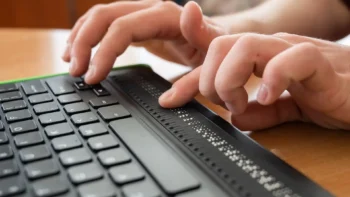Conducting Public Safety Drills with Your Mass Notification System
The 2020s have already brought some of the most severe and the most devastating natural disasters in modern American history. As a public safety leader, your job is to protect residents before, during, and after an event. No matter where your community is located and what types of threats you may face, every single city, county, village, and township across the nation needs to have a plan in place in the event of a natural disaster or act of terrorism. A significant component of any effective planning process is to ensure civic leaders and residents are active participants in community-wide safety preparation drills. By sharing instructions for the steps community members need to take to stay safe during a local emergency, your municipality will be better prepared to take proper safety precautions if a disaster occurs.
What is a Community Safety Drill?
Community safety drills are emergency education and preparatory exercises planned and operated by municipal public safety officials and/or police, sheriff, or fire department leadership. They are designed to simulate a local emergency, such as a wildfire, earthquake, active shooter, nuclear attack, or natural disaster. Members of the community are informed in advance regarding the date, time, and location of the drill and are encouraged to participate in the simulation. The purpose of the community safety drills is both to provide public safety leadership and staff with emergency response practice and to give residents the instruction and education they need in order to take effective and immediate safety precautions in the event of a local emergency.
How Often Should Community Safety Drills be Performed?
Every community should hold one to two community safety drills each year. Every community should prepare for the threat of an active shooter and other terrorist events annually. In addition, depending on the natural disaster threats to which your community is susceptible, any other relevant drills should be planned and executed.
How to Get Residents Involved
With the media reporting so many devastating stories of community violence and extreme weather, residents are more aware than ever of the unplannable risks that Americans face. The good news regarding this tragic reality is that many Americans are receptive to emergency planning information and training and are even seeking out resources, educational classes, and safety instructions. Now is the time to let your residents know that your community’s leadership is also taking the necessary steps to prepare for a local emergency and keep them safe and that it wants residents to be part of the preparation process.
Promote the date, time, and location of your community safety drills months in advance using every possible communication channel, including:
- Your municipal website, in a prominent location, with a link to a dedicated community safety page
- Social media
- Public relations and media relationships
- Home mailings
- Utility bill stuffers
- Emails to resident subscribers
- Posters in public offices and facilities
- Postcards handed out at community events
- Routine messaging from your mass notification system
Remind residents about upcoming safety drills frequently, including the week before, the day before, and the morning of the exercise. Frequent reminders will both encourage participation and mitigate the chance of a resident misinterpreting the drill as a true emergency.
Tips for a Successful Community Safety Drill
For greatest success, simulate every aspect of your public safety department’s response to a real emergency, from mass notification alerts to the use of safety equipment to resident participation and popular community locations.
- Involve your community emergency response team (CERT) in the planning and drill execution.
- Incorporate your semi-annual safety drills into your community’s emergency safety plan.
- Send a notification to all residents subscribed to your mass notification system. Not only will it give your internal staff more practice quickly navigating your emergency notification system, but it will also familiarize subscribers with the appearance and use of the alert messages.
- Be sure that your message indicates explicitly that the warning message is a test, or else you may inadvertently create panic.
- If your mass notification system is designed to distribute notifications via the Integrated Public Alert Warning System (IPAWS), send the clearly labeled test message via the IPAWS system as well. Not only will this ensure information about your safety drill reaches as many people as possible, but it will also give administrators more practice utilizing integrated IPAWS functionality.
- If you are practicing safety procedures associated with an active shooter event, hold your practice session at a realistic location, such as a shopping mall, on a university campus, at an office building, or at a school. Coordinate with the facility’s administration in advance to include them and their attendees in the drill.
- Coordinate with facility administrators to determine ideal evacuation routes, and ensure both safety staff and resident participants practice fleeing via the identified pathways.
- If you are practicing for a natural disaster, incorporate the use of community safety shelters.
- Before the drill, outline to all participants precisely what will transpire, what their role is, and what steps they should take. After the exercise, make sure each participant—both municipal staff and resident participants— leave with a better understanding of what to do in an emergency event.
- Execute the drill in a safe environment, and ensure that all participants are kept safe from start to finish.


